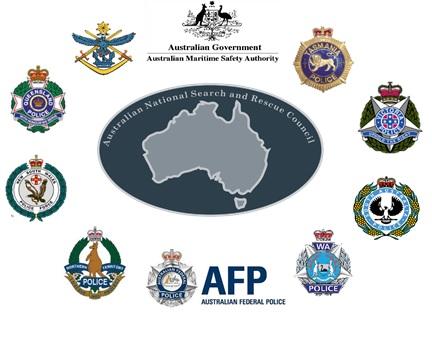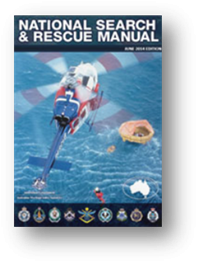Our SAR service is framed by the federated nature of the country. It brings together the strengths of the Commonwealth, states and territories in a collaborative and cooperative arrangement.
Australian SAR arrangements
As with many countries, the design and provision of Australia's national SAR service has developed over time to meet the geographic and cultural needs of our nation.
Combining Australia's large land mass, small population and active lifestyle, Australia has established a cooperative SAR arrangement between AMSA, the state and territory police, and the Australian Defence Force. These three organisations make up Australia's SAR authorities, with many other SAR organisations acting in support, including:
- professional SAR practitioners
- volunteers
- general aviation aircraft
- shipping
- the public.
With a number of parties involved in SAR response across eight states and territories, Australia’s SAR system is based on collaboration, cooperation and the concept of operational coordination by the authority best placed to do so.
National Search and Rescue (NATSAR) Council
The NATSAR Council is the national coordinating body for SAR response arrangements in Australia and is made up of representatives from the following SAR authorities:
- Australian Maritime Safety Authority (AMSA)
- Australian Defence Force
- Eight federal, state and territory police services.
 Logo of the NATSAR council
Logo of the NATSAR council
Intergovernmental Agreement and National SAR Manual
The Intergovernmental Agreement on National Search and Rescue Response Arrangements (IGA) puts in place arrangements between the 10 SAR authorities of the NATSAR council on the coordination of SAR in the Australian region.
It outlines the principles that underpin each SAR authority's responsibility for resourcing, coordination and cooperation. The manual also describes the council’s role in formulating operational level guidance related to SAR processes and procedures which are documented in the national SAR Manual.
This national arrangement continues to enable our collaborative commitment to rescuing people in distress and contributing to the safety of Australia’s citizens.
The IGA describes the NATSAR council’s functions as the following:
- Oversee the implementation of SAR arrangements within Australia’s SAR region for consistency with the national search and rescue response arrangements
- Sponsor and promote the development and use of the National SAR Manual, which details agreed SAR response and coordination arrangements in Australia
- Promote the ongoing effectiveness of the cooperative arrangements between the SAR authorities
National SAR Manual
Standardised procedures and operational techniques ensure everyone is working and communicating in the same way. This ensures the best chance of an effective SAR response and saving lives.
These principles and procedures are outlined in the National Search and Rescue Manual.
 National SAR manual cover
National SAR manual cover
SAR roles and responsibilities
Only one SAR authority will have overall coordination of a SAR incident at one time with other authorities acting in support. This is determined by a best placed principle.
Our responsibilities
At a Commonwealth level we:
- coordinate SAR operations for:
- persons on or from a vessel at sea
- international civil aircraft
- manned space vehicles
- aircraft on the Civil Aviation Safety Authority (CASA) and Recreational Aviation Australia (RA-Aus) registers
- liaise with international SAR authorities
- coordinate any national emergency plan or arrangement involving SAR within the Australian SAR region
- are the alerting post for receiving international distress alerts and onward distribution to the responsible SAR authority.
Australian Defence Force responsibilities
- coordinates SAR operations for Australian Defence Force and foreign military personnel, aircraft, ships and submarines
- provides SAR assistance to civil SAR authorities.
State and territory SAR authority (police) responsibilities
- coordinates SAR operations for:
- persons and vessels on inland waterways and waters within state and territory port limits
- inland waterways and ports
- land searches
- aircraft not on the CASA or RA-Aus registers including ultralights, paragliders, hang gliders and gyrocopters
- land searches for missing registered civil aircraft in support of us
- coordinates volunteer rescue organisations within respective jurisdictions.